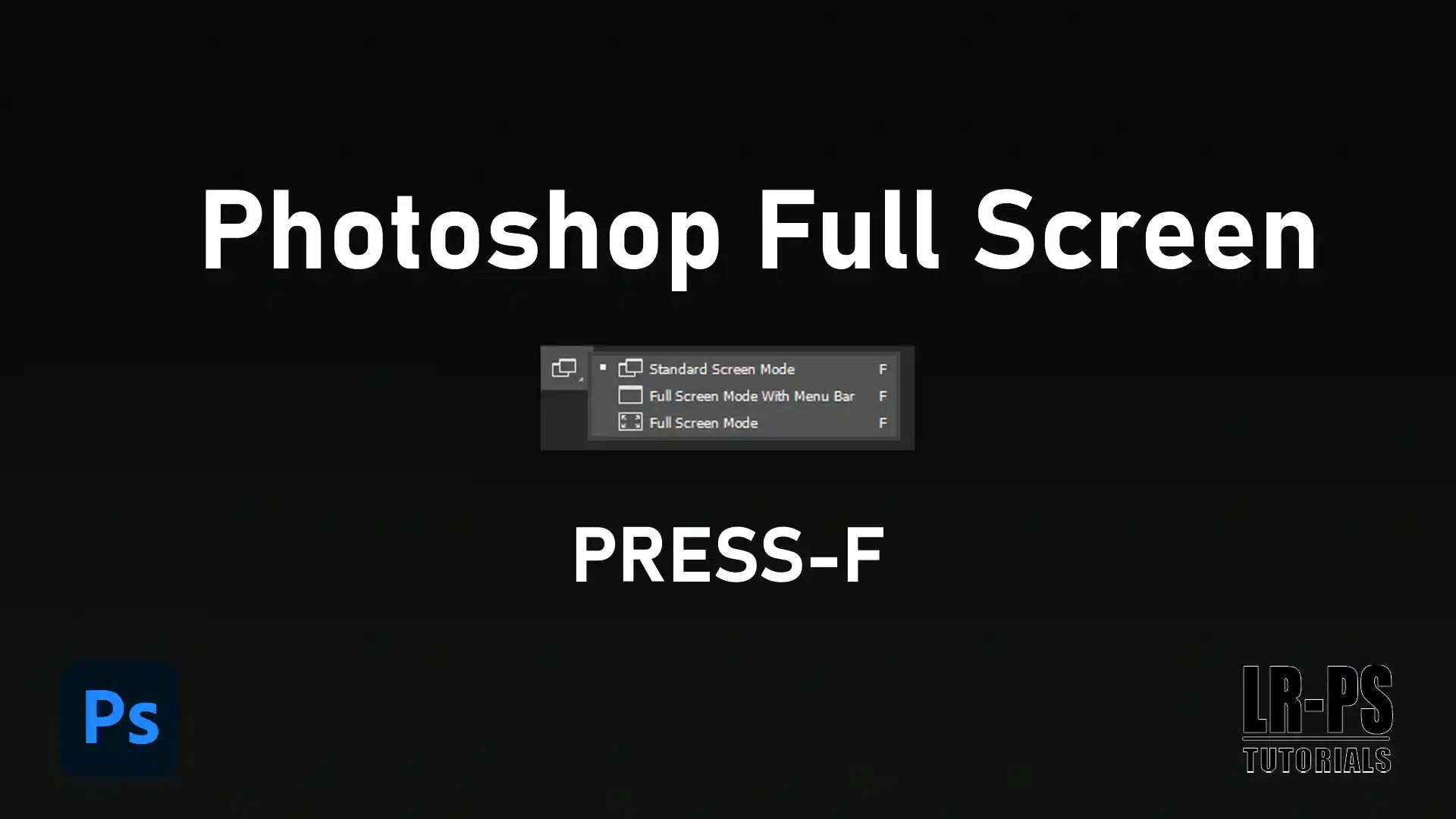
Ever found yourself wishing for a distraction-free workspace while editing in Photoshop full screen mode?
Let me introduce you to the power of Photoshop full screen mode. Imagine working on your design or photo without any toolbars or menus getting in the way-sounds like a dream, right?
This guide will walk you through how to activate, navigate, and maximize the benefits of full screen mode in Photoshop.
Ready to dive in and transform your editing experience?
Let’s get started!
Table of Contents
How to Enter Full Screen and Exit Full Screen Mode
To enter full screen mode, you start by opening Photoshop. Look at the top of the screen, you’ll see the View menu, where you can choose the Full Screen option.
Ensure that your document is visible and edges are clear for the best experience.
By default, this setting provides a clean workspace with minimal distractions. If needed, you can adjust the file settings to optimize the view.
Make sure that all edges are properly aligned, and your document remains visible throughout your editing process.
The last icon on the toolbar is the Standard Screen Mode works by providing a clean, distraction-free workspace that allows you to focus on entire screen and your project
Click on it to see more options.
Then, you select Screen Mode. You can choose between three screen modes:
- Standard Mode
- Full Screen Mode with Menu Bar
- Full Screen
Just pick the one you like. If you use keyboard shortcuts, press F to toggle through these modes.
This makes your editing workspace bigger and less distracting.
Exiting Full Screen Mode
Exiting full screen view mode is just as straightforward.
Go back to the View menu. You select Screen Mode icon again and pick Standard Screen Mode .
Alternatively, you can press the F key until you’re back to the default view.
Another quick way is to press ESC. Your panels and fly out menu will be back in no time.
Keyboard Shortcuts for Screen Modes

Keyboard shortcuts are useful and efficient:
- The F key toggles between the three screen modes.
- If you want to quickly hide or show the panels, press Tab key.
- Want to hide everything except the image window? Press Shift+Tab.
These actions help you work faster and keep your focus on the images.
Pro Tip: Customize your photoshop screen modes by going to Edit > Preferences > Interface. Tailor the workspace to fit your needs better.
Additional Tips for Efficient Editing
While working in full screen mode, you might find it helpful to use other essential tools in Photoshop.
For instance, the content-aware fill feature can help you seamlessly remove unwanted objects from your images.
To ensure you always have the correct answer, it’s important to verify your work before closing your images open.
Remember, the tools you use and the techniques you master can make a significant difference in achieving the best results from the very bottom of your image edits.
Types of Screen Modes in Photoshop
When working in Photoshop, knowing the different screen modes helps streamline the workflow and improve productivity. Let’s explore these options.
| Screen Mode | Description | Shortcut Key |
|---|---|---|
| Full Screen Mode with Menu Bar | Larger workspace, hides taskbar but shows menu bar. | F |
| Standard Screen Mode | Default view with menu bar, toolbars, and panels. | F |
| Full Screen Mode | Maximum screen space, hides all menus and panels. | F |
Full Screen Mode with Menu Bar
This mode with menu bar provides a larger work area by hiding the taskbar and dock while keeping the menu bar visible.
This mode is useful when you need to focus more on your artwork without distractions from the taskbar.
Standard Screen Mode
The standard screen mode is the default view when you open Photoshop. It includes the menu bar, toolbars, panels, and the active document window.
Use this mode for easy access to all tools and features.
Full Screen Mode
This mode removes all menus and puts your document in a borderless window, allowing you to utilize the maximum screen space.
Toggle through this mode using the F key or navigate via the View menu and select “Screen Mode” Press ESC to exit.
Customizing Your Screen Mode Settings

To tailor screen modes to your preferences, navigate to Edit > Preferences > Interface.
Customize the opacity of panels and borders to work more efficiently.
Additionally, understanding Photoshop shortcuts can significantly enhance your workflow.
Saving Custom Screen Mode Settings
Once you’ve adjusted the settings, you can save them for future use.
This ensures that each time you return to Photoshop, the workspace is arranged in a way that suits your needs.
Pro Tip: Use the tab key to hide or show panels quickly. It helps clean up the workspace without changing screen modes.
For those who are also using Lightroom, learning the Lightroom shortcuts can be equally beneficial in speeding up your editing process.
Adhering to Community Guidelines in Creative Platforms
Understanding and adhering to community guidelines is crucial when working on any collaborative platform, including Photoshop and Lightroom.
Following these community guidelines ensures that your content remains professional and respectful, which is especially important in shared environments.
For instance, when sharing your work online, it’s essential to review the community guidelines to avoid any issues and maintain a positive reputation.
By consistently aligning your practices with community guidelines, you not only contribute to a more constructive creative space but also enhance your own editing experience.
Remember, respecting community guidelines helps everyone stay focused and productive.
Additionally, enhance your skills with our classic training, explore portrait editing techniques, or review our glossary of photography and different digital cameras to deepen your understanding of photography, and learn about blending modes to deepen your understanding of editing.
Give it a try and see how it can improve your editing experience!
Frequently Asked Questions

How do I enable full screen in Photoshop?
Here are two ways you can switch to full-screen mode:
Press the F-key on your keyboard to cycle through the different full screen modes.
You can also find this option under the View menu, then choose Screen Mode, and select Full Screen Mode.
How do I view the full image in Photoshop?
To view the entire image, press Ctrl + 0 (zero) on Windows or Cmd + 0 (zero) on Mac. This will fit the image to your screen.
What is the shortcut for fit screen in Photoshop?
The shortcut to fit the image to the screen is Ctrl + 0 on Windows and Cmd + 0 on Mac.
What is the shortcut for full screen in Photoshop on Mac?
On a Mac, you can press Ctrl + Cmd + F to enter full screen mode. Alternatively, pressing the F key cycles through the full screen modes.
Conclusion
In conclusion, using photoshop full screen mode has really changed the way I work on my projects.
It helps me stay focused and avoid distractions by giving me a clear view of my work. Whether you’re editing a photo or designing something from scratch, this mode can make a big difference.
I’ve found that exploring different screen modes and learning the shortcuts can really speed up your workflow.
For more tips and techniques, check out the Photoshop course and the Lightroom course.
Also, if you’re looking to get started with Photoshop or Lightroom, you can explore the Adobe Photoshop and Adobe Photoshop Lightroom for more information.
Happy editing!
Read more about Photoshop:














